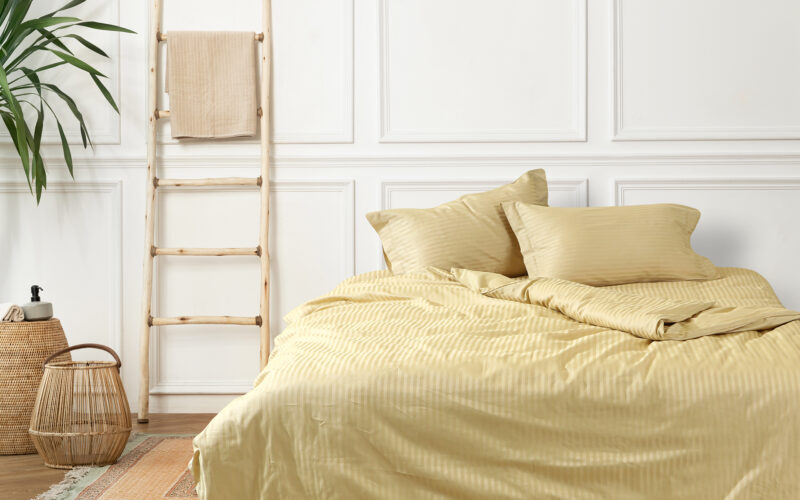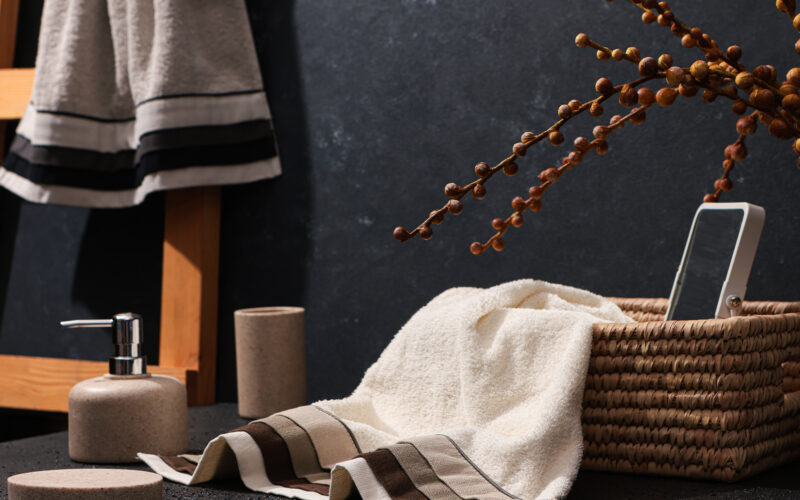Wash your bed linen and sheets with the right methods to extend their lifespan! Learn about ideal washing temperatures, detergent choices, and practical care tips.
Bed linen and sheets not only bring aesthetic harmony to the bedroom but also directly impact comfort. Since they come into direct contact with your skin every night, they deserve far more care than most people realize. The washing frequency, correct temperature, and choice of detergent directly influence both hygiene and fabric durability. With a proper care routine, your linens can stay as vibrant and comfortable as the day you bought them.
In this guide, you’ll discover the best practices for washing sheets, tips for maintaining fabric quality, and ways to keep your linens long-lasting.
How Often Should You Wash Bed Linen?
Sheets and duvet covers accumulate sweat, skin oils, and dust mites over time. For hygiene, washing once a week is recommended. Those with allergies may need to wash more frequently. During seasonal transitions, it’s also important to wash duvets and blankets along with your linens.
For a wider selection of designs and styles, explore Porland’s bed linen collections.
Key Points to Consider When Washing Sheets
- Always wash sheets with similar colors.
- Turn duvet covers inside out and close any zippers or buttons before washing. This prevents fabric wear and protects your machine.
- Avoid overloading the drum this ensures a deeper, more efficient clean.
For cotton or satin fabrics, you can browse Porland’s sheet models for suitable options.
What Is the Best Washing Temperature?
The ideal washing temperature for most bed linens is 40°C. This level balances hygiene with fabric care. If the label specifies 60°C, you may wash at this higher temperature for added hygiene—but frequent high-heat washes can cause fading over time.
Choosing the Right Detergent
Detergent choice is key to keeping linens fresh and long-lasting.
- Colored linens → Use liquid detergents with anti-fade formulas to protect vibrancy.
- White linens → Choose bleach-free, gentle powder detergents that maintain brightness without damaging fibers.
- Sensitive skin → Opt for organic or hypoallergenic detergents. These are gentle on the skin and eco-friendly.
Should You Use Fabric Softener?
While fabric softeners add fragrance and softness, they can weaken fibers over time—especially in cotton fabrics. To prolong fabric life, limit use or switch to natural alternatives. A splash of vinegar works as a natural softener and neutralizes odors.
Tips for Faster Drying
Drying is just as important as washing. Proper methods ensure both practicality and fabric care.
- Use a low-spin cycle to remove excess water—avoid very high spin speeds that may damage fibers.
- Air-dry outdoors in a shaded, well-ventilated spot. This prevents fading and musty odors.
- If drying indoors, choose a well-ventilated room.
- For dryers, use a low-heat, delicate cycle to avoid fiber damage.
- Hang linens fully open to dry—this reduces drying time and minimizes wrinkles, cutting down on ironing.
How to Keep Bed Linen Long-Lasting
- Avoid frequent high-temperature washes that weaken fibers.
- Always follow the care label instructions.
- Rotate between multiple linen sets instead of using the same one weekly—this reduces wear.
For more inspiration, check out Porland’s bedroom textile collections.
Porland’s Tip: Stylish Storage After Washing
After washing, iron linens neatly, fold them, and store them in a dry, airy cupboard. Porland recommends using fabric storage bags or decorative boxes to protect against dust while letting the fabric breathe. Adding lavender sachets can create a naturally fresh scent.
Frequently Asked Questions
How do you keep bed linen in good condition?
Wash weekly at the recommended temperature, use gentle detergents, and store in cool, dry spaces. Rotate sets to reduce fabric wear.
How should you iron bed linen?
Check the label first. Cotton linens can be ironed at high heat. Start with pillowcases, then sheets, and finish with duvet covers.
At what temperature should bed linen be washed?
- Satin or silk: 30–40°C, low heat to preserve delicate fibers.
- Cotton: 40–60°C (avoid frequent high-heat washes).
- Colored linens: 30–40°C.













